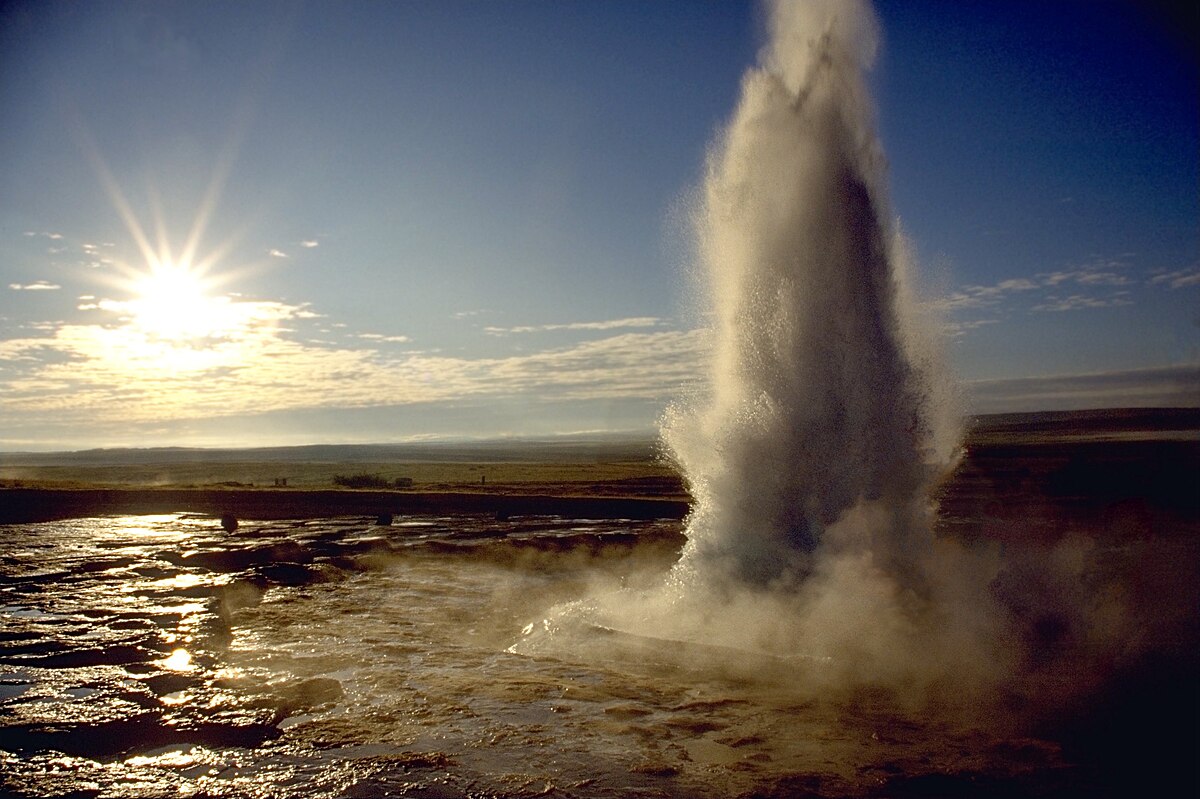
Geysers are one of nature's most spectacular displays, shooting hot water and steam high into the air. But what exactly causes these natural fountains to erupt? Geysers form when underground water meets hot rocks, creating pressure that forces the water to the surface. These eruptions can be both predictable and random, making them fascinating to study. Did you know that Yellowstone National Park is home to over half of the world's geysers? Or that some geysers can shoot water over 300 feet high? From the science behind their eruptions to the most famous geysers around the globe, here are 30 intriguing facts about these natural wonders.
What is a Geyser?
Geysers are fascinating natural phenomena that shoot hot water and steam from the ground. They are rare and occur in specific geothermal areas. Let's dive into some intriguing facts about these natural wonders.
-
Geysers are rare: Only about 1,000 geysers exist worldwide. Most of them are found in Yellowstone National Park in the United States.
-
Named after an Icelandic geyser: The term "geyser" comes from the Icelandic word "geysa," meaning "to gush." It was named after the Great Geysir in Iceland.
-
Three main components: Geysers need heat, water, and a plumbing system. Without these, they can't function.
-
Yellowstone's Old Faithful: Old Faithful is the most famous geyser, known for its regular eruptions every 60 to 110 minutes.
-
Eruptions can be massive: Some geysers can shoot water up to 300 feet in the air. Steamboat Geyser in Yellowstone holds the record for the tallest eruption.
How Do Geysers Work?
Understanding how geysers work involves a bit of geology and physics. Here's a breakdown of their fascinating mechanics.
-
Heat source: Geysers are located near volcanic areas where magma heats underground water.
-
Water reservoir: Rainwater seeps into the ground, filling underground reservoirs.
-
Plumbing system: A network of cracks and fissures allows water to move and build pressure.
-
Pressure buildup: As water heats, it turns to steam, increasing pressure until it forces water out of the ground.
-
Eruption cycle: After an eruption, the cycle starts again as water refills the reservoir.
Famous Geysers Around the World
Geysers are scattered across the globe, each with unique characteristics. Here are some of the most notable ones.
-
Strokkur Geyser: Located in Iceland, Strokkur erupts every 6-10 minutes, shooting water up to 65 feet.
-
Lady Knox Geyser: Found in New Zealand, this geyser erupts daily, reaching heights of 65 feet.
-
El Tatio: Situated in Chile, El Tatio is the third-largest geyser field in the world.
-
Valley of Geysers: Located in Russia, this valley contains around 90 geysers and numerous hot springs.
-
Geysir: The original geyser in Iceland, Geysir, can shoot water up to 230 feet but erupts infrequently.
Geysers and Their Ecosystems
Geysers create unique ecosystems that support various life forms. Let's explore how these environments thrive.
-
Thermophiles: Microorganisms called thermophiles thrive in the hot waters of geysers.
-
Colorful bacteria: Different bacteria create vibrant colors around geysers, from yellow to red to green.
-
Unique plant life: Some plants have adapted to the harsh conditions around geysers.
-
Animal visitors: Animals like bison and elk are often seen near geysers, attracted by the warmth.
-
Mineral deposits: Geysers deposit minerals like silica, creating beautiful formations called geyserite.
Geysers and Human Interaction
Humans have always been fascinated by geysers. Here's how they interact with these natural wonders.
-
Tourist attractions: Geysers draw millions of visitors each year, boosting local economies.
-
Scientific research: Scientists study geysers to understand geothermal activity and predict volcanic eruptions.
-
Cultural significance: Some indigenous cultures consider geysers sacred and incorporate them into their traditions.
-
Geothermal energy: Geysers and hot springs are used to generate geothermal energy in some regions.
-
Conservation efforts: Protecting geysers from human impact is crucial to preserving these natural wonders.
Fun and Surprising Facts
Geysers have some quirky and surprising aspects. Here are a few fun facts to ponder.
-
Geyser gazing: There's a hobby called geyser gazing, where enthusiasts travel to watch and document geyser eruptions.
-
Oldest known geyser: The oldest known geyser is the Great Geysir in Iceland, active for over 10,000 years.
-
Geyser sounds: Erupting geysers can produce sounds ranging from hissing to roaring.
-
Geyser art: Some artists create sculptures and paintings inspired by the beauty of geysers.
-
Geyser myths: Various myths and legends surround geysers, often depicting them as portals to other worlds.
Geysers: Nature's Spectacular Show
Geysers are truly one of nature's most fascinating phenomena. These hot springs, which periodically erupt with boiling water and steam, offer a glimpse into the Earth's geothermal activity. Found in only a few places around the world, like Yellowstone National Park and Iceland, geysers captivate visitors with their power and beauty. They remind us of the dynamic processes happening beneath our feet.
Understanding geysers helps us appreciate the delicate balance of our planet's ecosystems. They also serve as natural laboratories for scientists studying geothermal energy and volcanic activity. Next time you witness a geyser's eruption, remember the intricate natural processes that make it possible.
Geysers are more than just tourist attractions; they're windows into the Earth's fiery heart. So, whether you're a science enthusiast or just love nature's wonders, geysers are sure to leave you in awe.
Was this page helpful?
Our commitment to delivering trustworthy and engaging content is at the heart of what we do. Each fact on our site is contributed by real users like you, bringing a wealth of diverse insights and information. To ensure the highest standards of accuracy and reliability, our dedicated editors meticulously review each submission. This process guarantees that the facts we share are not only fascinating but also credible. Trust in our commitment to quality and authenticity as you explore and learn with us.
